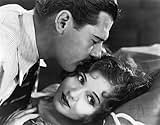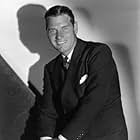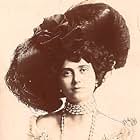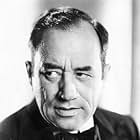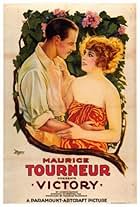Ajouter une intrigue dans votre langueHeyst, a hermit on his own tropical island, plays unwilling host to red-headed stowaway Alma. Danger looms...Heyst, a hermit on his own tropical island, plays unwilling host to red-headed stowaway Alma. Danger looms...Heyst, a hermit on his own tropical island, plays unwilling host to red-headed stowaway Alma. Danger looms...
- Director
- Writers
- Stars
Clarence Wilson
- Zangiacomo
- (as Clarence H. Wilson)
Stanley Fields
- Steamer Captain
- (uncredited)
Lillian Worth
- Myrtle
- (uncredited)
Avis en vedette
This early talkie, like a pencil sketch of the famous Maurice Tourneur silent, preposterously reduces Conrad's "Victory" to a Nancy Carroll vehicle. But don't blame her: she gives a characteristically warm and nuanced performance, the best in the film, as a downtrodden violin-player in an all-girl band in Surabaya (now, why didn't Joseph Conrad think of that?),
William Wellman directs in rough-and-ready style, emphasizing leering melodrama, yet produces few pre-code thrills. The weakest link here is Wellman favorite Richard Arlen, even more awkward than he was in WINGS; playing Heyst as Joe College in a tropical white suit, who just happens to enjoy living alone on an island, he drains the central role of conflict and complexity.
In this company, the villains have ample room to shine: Warner Oland works hard at threatening the leading lady's virtue (as does most of the cast), but only Gustav von Seyffertitz, in a stylish black cloak and using Bela Lugosi's vowels, suggests the corruption and wit of Conrad's creation.
The tropical flavor of Surabaya comes down to hula dancers and Hawaiian music, but Archie Stout provides some effective lighting and keeps his shaky-cam moving. While the plot resolution will please only fans of routine Hollywood endings, Nancy Carroll at her peak is always worth a look.
William Wellman directs in rough-and-ready style, emphasizing leering melodrama, yet produces few pre-code thrills. The weakest link here is Wellman favorite Richard Arlen, even more awkward than he was in WINGS; playing Heyst as Joe College in a tropical white suit, who just happens to enjoy living alone on an island, he drains the central role of conflict and complexity.
In this company, the villains have ample room to shine: Warner Oland works hard at threatening the leading lady's virtue (as does most of the cast), but only Gustav von Seyffertitz, in a stylish black cloak and using Bela Lugosi's vowels, suggests the corruption and wit of Conrad's creation.
The tropical flavor of Surabaya comes down to hula dancers and Hawaiian music, but Archie Stout provides some effective lighting and keeps his shaky-cam moving. While the plot resolution will please only fans of routine Hollywood endings, Nancy Carroll at her peak is always worth a look.
Nancy Carroll is a violinist in an all-girl band on Surabaya, where she is the object of lust for sexually predatory Clarence Wilson and Warner Oland. That's actually taken from Joseph Conrad's VICTORY, although I doubt he had Wilson and Oland in mind when it became his first commercially successful book in 1915. She stows away on Arlen's boat to get away from them, where Nancy gets predatory about him, while he doesn't seem to be interested, possibly because his voice hasn't yet broken.
Director William Wellman puts in a lot of tricks, with a long tracking shot of the goings-on of Oland's tawdry 'casino', and an adventurously noisy first half of the movie, where the sounds of the orchestra, crowds, some woman laughing and other people singing threaten the dialogue. 1930 heard the talkies come of age, with some noisy movies (like the battle sequences of ALL QUIET ON THE WESTERN FRONT) like this one. Clearly sound was no longer a novelty, but part of the design of telling a story; the noise of 'civilization' on Surabaya is in contrast to to the quiet on Arlen's island. Wellman was one of the directors of the era who thought that motion pictures should move, and sound pictures should have sound.
Paramount produced versions of this movie in six languages. While alternate-language versions were a common phenomenon of the time, before dubbing was perfected, to maintain foreign markets, clearly this was seen as an important movie. Its release at less than an hour indicates that something had gone wrong. While it appears a bit too brisk, that's the limit of it so far as I can see, and that briskness is due to its short length. Perhaps preview audiences didn't care for it, so the Paramount brass had it cut down.
Director William Wellman puts in a lot of tricks, with a long tracking shot of the goings-on of Oland's tawdry 'casino', and an adventurously noisy first half of the movie, where the sounds of the orchestra, crowds, some woman laughing and other people singing threaten the dialogue. 1930 heard the talkies come of age, with some noisy movies (like the battle sequences of ALL QUIET ON THE WESTERN FRONT) like this one. Clearly sound was no longer a novelty, but part of the design of telling a story; the noise of 'civilization' on Surabaya is in contrast to to the quiet on Arlen's island. Wellman was one of the directors of the era who thought that motion pictures should move, and sound pictures should have sound.
Paramount produced versions of this movie in six languages. While alternate-language versions were a common phenomenon of the time, before dubbing was perfected, to maintain foreign markets, clearly this was seen as an important movie. Its release at less than an hour indicates that something had gone wrong. While it appears a bit too brisk, that's the limit of it so far as I can see, and that briskness is due to its short length. Perhaps preview audiences didn't care for it, so the Paramount brass had it cut down.
"Dangerous Paradise" is directed by William 'Wild Bill' Wellman and stars Nancy Carroll and Richard Arlen. Oddly, when it begins, there is a prologue which says that this story takes place in a land 'East of the Suez'...which is technically true. But the South Seas are practically on the other side of the globe...and that's actually where the story is supposed to take place. That's like saying a story is East of California and takes place in Sudan!!
When the story begins, it's very obvious it was made in the Pre-Code era, as two slime-balls (Clarence WIlson and Warner Oland) spend most of their time sexually harassing poor Alma (Carroll). In desperation, she sneaks aboard a boat belonging to a recluse, Heyst (Arlen), when he makes a rare foray into civilization (such as it is). Can poor Alma get away from these creeps once and for all and live a happy life?
While I mostly enjoyed "Dangerous Paradise" one part of the film confused me--Alma's reaction to Heyst after the big finale. It just seemed weird and didn't fit the film at all. Still, it is an enjoyable, albeit lurid, little film.
When the story begins, it's very obvious it was made in the Pre-Code era, as two slime-balls (Clarence WIlson and Warner Oland) spend most of their time sexually harassing poor Alma (Carroll). In desperation, she sneaks aboard a boat belonging to a recluse, Heyst (Arlen), when he makes a rare foray into civilization (such as it is). Can poor Alma get away from these creeps once and for all and live a happy life?
While I mostly enjoyed "Dangerous Paradise" one part of the film confused me--Alma's reaction to Heyst after the big finale. It just seemed weird and didn't fit the film at all. Still, it is an enjoyable, albeit lurid, little film.
Le saviez-vous
- AnecdotesAt Paramount's foreign studio in Joinville, France four alternate language versions were filmed: in French, Italian, Polish and Swedish.
- ConnexionsAlternate-language version of Dans une île perdue (1931)
Meilleurs choix
Connectez-vous pour évaluer et surveiller les recommandations personnalisées
Détails
- Date de sortie
- Pays d’origine
- Langues
- Aussi connu sous le nom de
- Two Against Death
- Lieux de tournage
- société de production
- Consultez plus de crédits d'entreprise sur IMDbPro
- Durée58 minutes
- Couleur
- Rapport de forme
- 1.20 : 1
Contribuer à cette page
Suggérer une modification ou ajouter du contenu manquant

Lacune principale
By what name was Dangerous Paradise (1930) officially released in India in English?
Répondre







